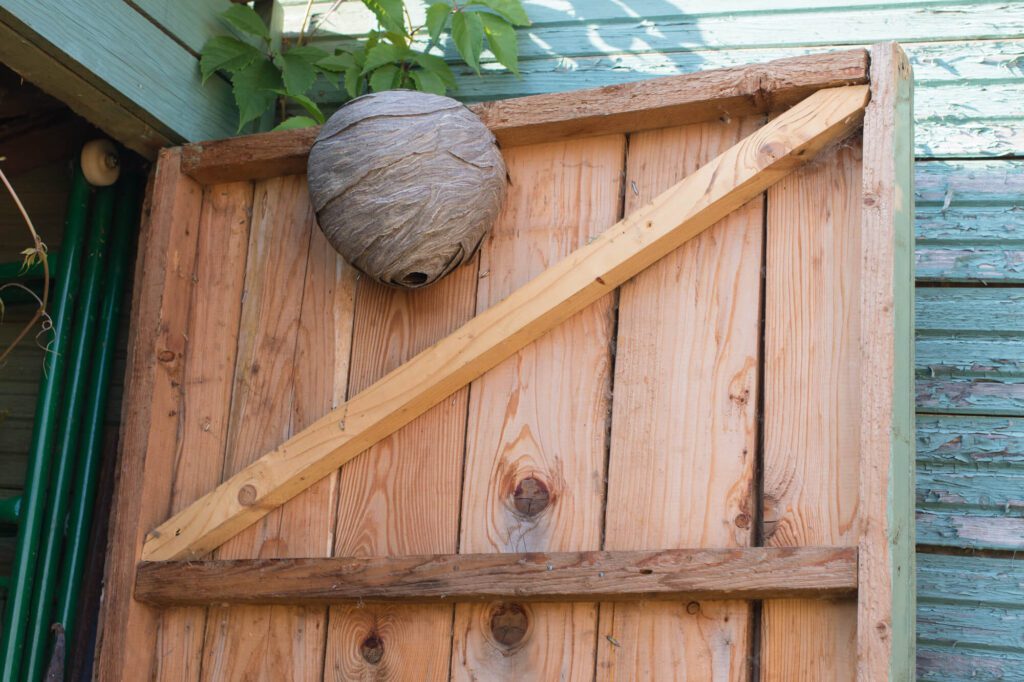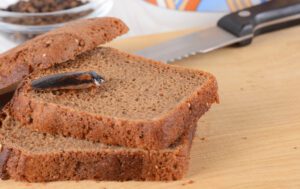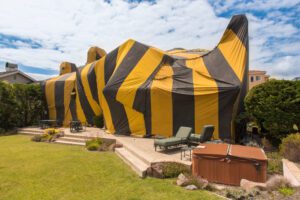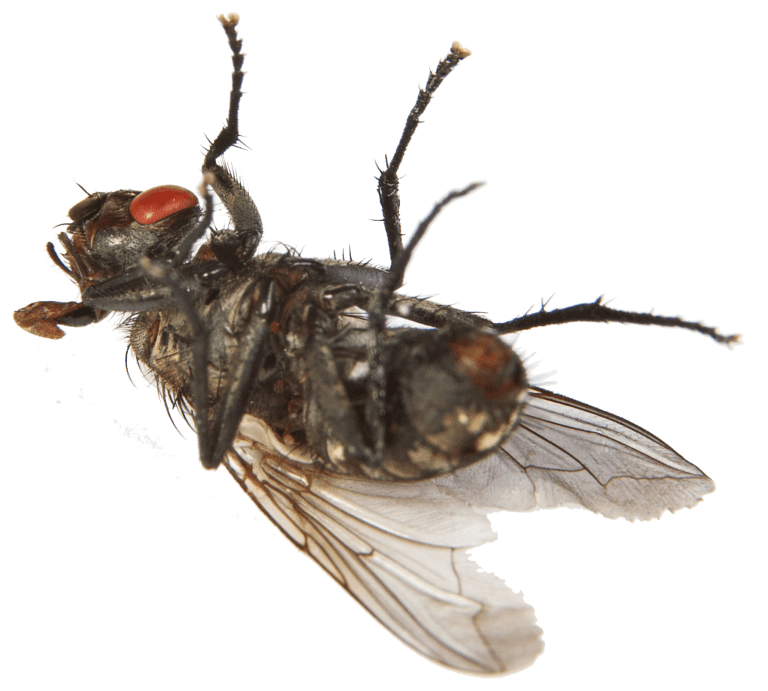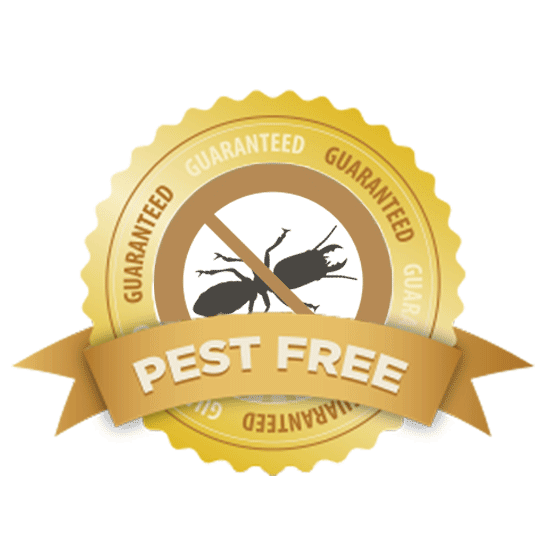Hornets and wasps kill more people than venomous snakes or aggressive dogs.
Wilderness and Environmental Medicine published a report showing the causes of death for 1,610 people from 2008 to 2015. During the 8-year time frame dog attacks claimed 272 lives, snake bites 99 but the highest number of deaths came from hornets, wasps or bees.
A total of 478 deaths were a direct result of an attack from hornets, wasps or bees. Hornets and wasps are particularly dangerous because they don’t die after stinging you.
When threatened a hornet or wasp will sting it’s victim repeatedly. High levels of toxins can cause shock, organ failure and death.
The sooner you identify a nest, the less risk it’ll present to you and your family. Read on to learn 5 signs that may indicate you have a wasp or hornet’s nest.
1. You See Wasps Flying in the Area
The first sign of a nest is an increase in bug activity. If you notice more hornets or wasps in your yard they might be busy building a nest.
It’s important to have a basic understanding of the differences between hornets, wasps and yellow jackets. Each species operates differently and will pose a different threat.
Below we will list the wasp species you’re most likely to encounter:
Pollen Wasp
The species of pollen wasps looks almost identical to the yellow jackets species. However, pollen wasps have unusually large antennas that help set them apart. Their behavior is a lot like bees in the sense that they prefer to work independently. The pollen wasp spends its day feeding on nectar and pollen.
Potter Wasp
The potter wasp gets its name from it’s “pot” shaped nest building skills. There isn’t one specific description that works to identify all of the different potter wasp species.
European Paper Wasp
You can easily spot a European paper wasp by their black bodies and yellow markings. Their bodies are slender and a tight “waistline” point between the thorax and abdomen.
When in flight you can see the paper wasp’s legs dangling behind them. Amazingly enough, the intense looking paper wasp species isn’t aggressive and they are less likely to sting you.
2. Hornets & Yellow Jackets Frequent Your Yard
If you’re seeing a lot of flying activity but the insects aren’t wasps, they might be hornets or yellow jackets. Next, we’ll look at the different ways to identify hornets and yellow jackets.
Hornet
Hornets look similar to yellow jackets yet their bodies are slightly larger and more full. Hornets and yellow jackets have a similar level of aggressive tendencies. There are several types of hornets species including yellow, black and black and white hornets.
Hornets are small yet powerful and can release a lot of venoms when they sting you. In fact, Hornets are capable of releasing more venom for every sting than any other insect.
Yellow Jacket
It’s easy to mistake a yellow jacket for a helpful honeybee. However, the yellow jackets are smaller in size than honey bees and they have an orange (rather than yellow) body color. When in flight yellow jackets will fly sporadically from side to side. Yellow jackets are scavengers and will fly around looking for their next meal.
3. You See the Beginning of a Nest
The tricky part about wasp and hornets nests is identifying them before they’re fully built. Before you find a fully constructed nest, you might see small remnants that signify the beginning of construction.
If you notice any weird bug like structures in your doorway or backyard, you might have a hornet’s nest. Nests are easier to treat when you can identify them early on. If you suspect you might have a nest you should speak with a professional to determine what steps you should take next.
4. Hornets Nest Identification
Next, we’ll explain where you’re likely to find a fully grown hornet’s nest. You can protect yourself and your family by understanding where hornets nests are most likely to occur. Here are some of the locations you could find a hornet’s nest:
- Attic
- Under your roof
- Shed
- Garage
- Tree trunks
Hornets are great at building free hanging nests and attaching them to a nearby object. Yet, their nests aren’t always high up and out of reach. You can also find a hornet’s nest in the ground.
Hornets are opportunists and will create their nests in abandoned snake or rodent holes. One of the scariest locations is when the nest is in the ground in a high foot traffic area. For example, a hornet’s nest hiding in a garden presents a high risk of a hornet attack.
5. Signs of a Fully Grown Wasp Nest
Wasps nests will look different from a hornet’s nest. The wasps create their nests from chewed wood and it makes their nests look papery. You’re most likely to find a wasp nest under your roof, in a garden shed or behind outdoor shutters.
- Garden Shed
- Behind outdoor shutters
- Under the roof
Remember, it isn’t your job to determine if you have a wasp, hornet or yellow jacket nest. The moment you suspect an infestation or nest you should seek professional help. Trying to remove a nest on your own can be dangerous and even deadly.
Stay Safe and Call a Professional
It’s important to take action immediately when you find a wasp or hornet’s nest.
Command Pest Control can help you with any of your pest problems. Our team of trained professionals can provide you with immediate attention.
We offer a wide variety of services including termite control, pest control and tree treatment. Many people are hesitant to call a professional pest service because they don’t know what it’ll cost. Command Pest Control wants to remove that fear for you by providing a free inspection and quote.
After you submit a request for an inspection a Command Pest Control professional will visit your home. They’ll check for any signs of intruders and they’ll look for ways you can prevent future infestations.
Complete our short form (name, email, phone, and need) and we’ll provide you with a free inspection and quote. After you submit the short form one of our team members will call you right away.
Don’t spend time worrying about your bug problems, let us help. Schedule your free inspection today!

